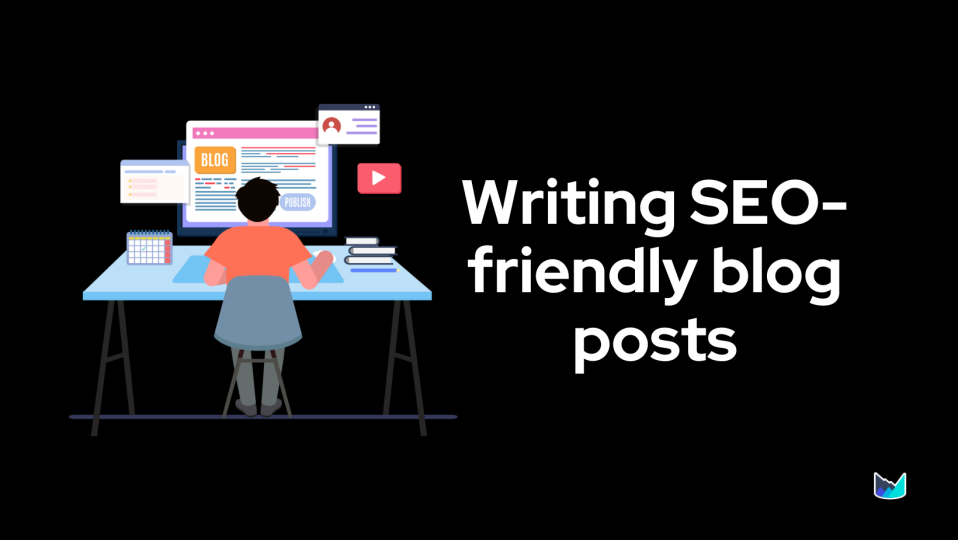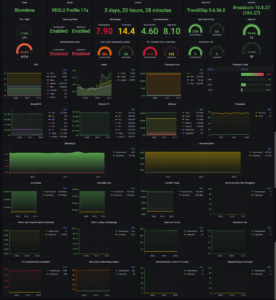Introduction to Blog Writing and SEO
Blogging has become a powerful tool for sharing ideas, building brands, and connecting with audiences. But if you want your content to stand out in the crowded online space, mastering blog writing tips for SEO is essential. It’s not just about putting words on a page; it’s about crafting compelling narratives that search engines can understand and readers will love.
Imagine pouring your heart into a captivating post only to find it lost among countless others. That’s where SEO comes in—a strategic approach that can elevate your content from obscurity to prominence. Whether you’re an experienced writer or just starting out, understanding how to optimize your blog can make all the difference. Let’s dive into some key strategies that will help you write blogs that attract traffic and engage readers effectively!
Understanding the Importance of Keywords and Research
Keywords are the backbone of effective blog writing. They give your content direction and help you connect with your target audience. Understanding what words or phrases people search for is crucial.
Researching keywords can reveal trends, questions, and interests within your niche. Tools like Google Keyword Planner and SEMrush provide valuable insights. These resources allow you to discover high-volume terms that resonate with potential readers.
Incorporating relevant keywords throughout your blog enhances visibility in search engines. However, it’s essential to use them naturally; forced inclusion can disrupt flow and reduce engagement.
Focus on long-tail keywords as they often attract more targeted traffic. This means fewer competitors and better chances of ranking higher on search results pages. Always keep an eye on emerging trends to stay ahead of the curve in your blogging strategy.
Crafting Engaging Titles and Introductions
The title is your blog’s first impression. It needs to grab attention and spark curiosity. Think of it as a hook that draws readers in, compelling them to click. Use powerful words and keep it concise.
Introductions should set the stage for what’s to come. Start with an intriguing fact or a question that resonates with your audience. This creates an immediate connection.
Make sure to outline what readers will learn or discover in your post. A clear roadmap encourages them to continue reading.
Don’t be afraid of using numbers or lists in titles; they suggest structure and clarity. An engaging introduction not only piques interest but also builds anticipation for valuable insights ahead!
Remember, both elements work together—lure readers with a captivating title, then hold their attention with a strong opening that promises value throughout the article.
Formatting for Readability and Scannability
Formatting is crucial in making your blog posts accessible. A well-structured piece encourages readers to engage with your content.
Use short paragraphs. This helps break up text and makes it less daunting. Aim for 2-4 sentences per paragraph for optimal readability.
Headings and subheadings guide the reader through your post. They act as signposts, allowing visitors to find information quickly.
Bullet points are another effective tool. They highlight essential details without overwhelming the reader with dense blocks of text.
Incorporate whitespace around elements on the page. It creates a clean look that invites exploration rather than pushing users away.
Consider using bold or italicized text sparingly to emphasize key points. This draws attention where it’s needed most while keeping distractions at bay.
Utilizing Meta Descriptions and Alt Text
Meta descriptions serve as a sneak peek into your blog post. They appear in search engine results and can influence whether someone clicks on your link. Crafting an enticing description, around 155 characters long, is essential for attracting readers.
Include relevant keywords naturally within the meta description. This boosts SEO while making it clear what the article covers. Avoid keyword stuffing; keep it engaging and informative.
Alt text plays a critical role when using images in your posts. It describes visuals for users who may not be able to see them, enhancing accessibility. Search engines also use alt text to understand the content of images better.
Incorporate descriptive phrases that accurately reflect the image’s context or purpose. Doing so improves user experience and helps with ranking potential in searches related to those images.
Internal Linking and Outbound Links for SEO
Internal linking is a powerful tool in blog writing. It helps guide readers through your content while improving site navigation. When you link to other pages on your website, you encourage visitors to explore more of what you offer.
These links also signal search engines about the relationship between different pieces of content. A well-structured internal linking strategy can enhance your site’s authority and ranking potential.
Outbound links are equally important. Linking to reputable external sites boosts your credibility. Search engines recognize that you’re providing value by directing users to relevant resources.
Moreover, outbound links can establish connections within your niche, possibly leading others to link back to you in return. This mutually beneficial practice fosters community and enhances SEO performance over time.
Balancing internal and outbound links creates a rich experience for readers and improves overall site visibility in search results.
The Power of Visuals in Blog Writing
Visuals play a crucial role in blog writing. They capture attention and break up long blocks of text, making content more digestible.
Images, infographics, and videos can enhance understanding. A well-placed visual often communicates ideas quicker than words alone. Readers are more likely to share posts that include striking visuals.
Quality visuals also contribute to SEO efforts. Using relevant images with appropriate alt text helps search engines understand your content better. This can improve rankings in search results.
Additionally, incorporating color schemes and design elements creates brand consistency. This fosters trust and keeps readers engaged longer.
Remember to optimize image size for faster loading times too; slow pages lead to high bounce rates, which affects user experience negatively. Investing time in selecting the right visuals pays off by elevating both engagement and overall quality of your blog posts.
Tips for Consistency and Quality Content Creation
Consistency is key when it comes to blog writing. Set a realistic schedule that you can stick to, whether that’s weekly or bi-weekly. Regular updates keep your audience engaged and coming back for more.
Quality matters just as much as frequency. Focus on providing valuable information that addresses your readers’ needs and interests. Research thoroughly before diving into a topic.
Consider creating an editorial calendar. This helps organize ideas and makes sure you’re covering a range of topics relevant to your niche.
Don’t hesitate to repurpose content in different formats, such as turning a popular blog post into an infographic or video. This expands reach while maintaining quality.
Always proofread and edit before publishing. Mistakes can undermine the credibility of your content, so take the time needed for polish and clarity.
Measuring Success with Analytics
Measuring success in blog writing isn’t just about the number of views. It’s crucial to dive into analytics for deeper insights.
Start by tracking your page views, but don’t stop there. Analyze metrics like bounce rates and average time on page. These figures reveal how engaging your content is.
Use tools like Google Analytics to monitor which keywords drive traffic. This information can guide future topics that resonate with your audience.
Look at social shares and comments too. They reflect engagement levels and help you understand what readers value most.
Setting up goals within these platforms allows you to measure conversions as well, whether it’s newsletter sign-ups or product purchases linked from your blog posts.
Regularly reviewing this data will inform your strategy, helping you adjust content based on real performance rather than assumptions.
Conclusion: The Key to SEO
Mastering blog writing for SEO is an ongoing journey that requires practice and dedication. By focusing on keyword research, creating engaging content, and ensuring readability, you set the stage for success. Don’t underestimate the value of visuals or the power of links—both internal and outbound can significantly enhance your site’s authority.
Consistency in publishing quality content will keep readers coming back while also improving search engine rankings. Monitoring analytics enables you to understand what works and what doesn’t, allowing for continuous improvement.
Embrace these strategies as essential components of your blogging toolkit. They not only elevate your writing but also increase visibility in a crowded digital landscape. As you implement these tips, you’ll be well on your way to achieving SEO success through effective blog writing




